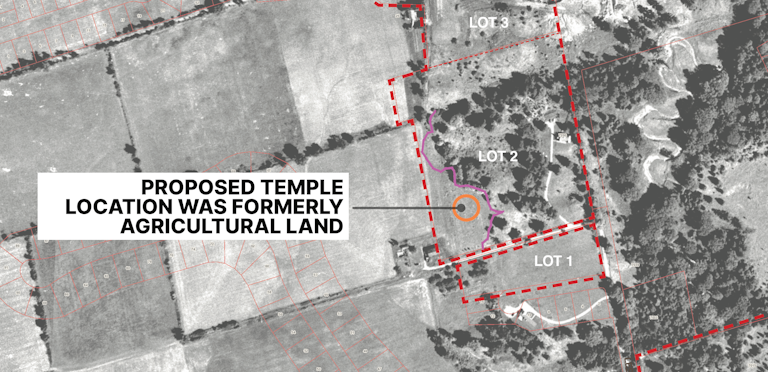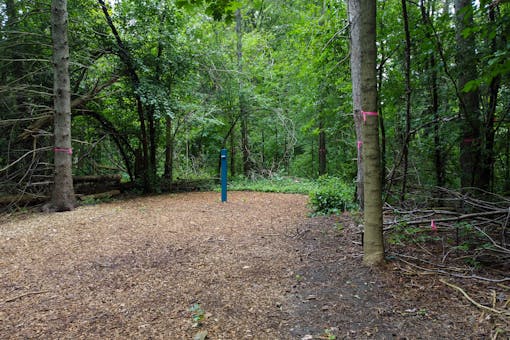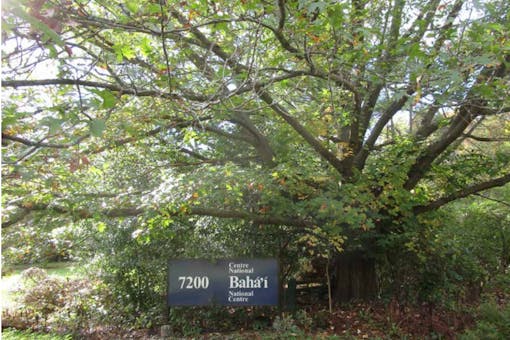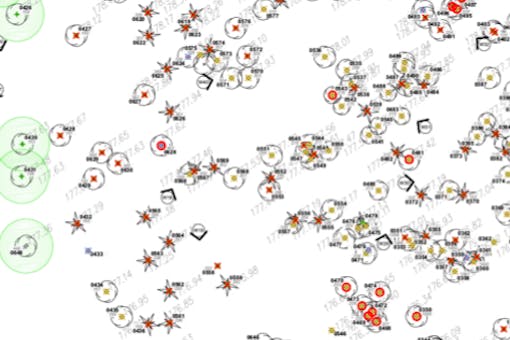
Temple Site and Ecology
The Bahá’í Temple site is located at 7200 Leslie Street, Markham, Ontario, adjacent to the Bahá’í National Centre administrative building. The Bahá’í Temple land was acquired by the Bahá’í community in 1968. Since that time, it has been reserved for a future Temple and preserved even as the surrounding areas have been turned from agricultural land into residential properties.
Site selection
The location of the Bahá’í Temple was selected after extensive evaluation of the ecology and landscape of the property. It will be constructed in a location that was formerly agricultural lands and then subsequently planted for red pine lumber stock. The location of the Temple is characterized by significant invasive and non-native species that are threatening the integrity of the adjacent significant woodland down the slope and into the valley. As part of the Temple construction, the invasive species will be removed and managed, with associated restoration and enhancement efforts to return the surrounding area to a healthy and natural landscape. Although it is ecologically connected, the Temple remains at some distance from the German Mills Settlers Park area, with only restoration efforts proposed on the lands bordering the meadow.
The temple will be nestled into the woods and surrounded by a new successional, native forest and gardens.
Location
The designated site for the Temple building was used as agricultural land as recently as 1954. It is surrounded by a former landfill site (closed in 1978) – now the German Mills Settlers Park and Natural Habitat to the north, the Bayview Golf and Country Club to the west, and Bercy (Wycliffe) Park to the east.
The location of the Bahá’í Temple was selected after extensive evaluation of the ecology and landscape of the property. It will be constructed in a location that was formerly agricultural lands and then subsequently used as an orchard. The location of the Temple is characterized by significant non-native and invasive species that are threatening the integrity of the adjacent significant woodlands. As part of the Temple construction, the invasive species will be removed and managed, with associated restoration and enhancement efforts to return the surrounding area to a healthy and natural landscape. Although it is ecologically connected, the Temple remains at some distance from the German Mills Settlers Park area, with only restoration efforts proposed on the lands bordering the meadow.

Environmental benefit and ecological impacts
The Bahá’í sacred writings refer to nature as the expression of God’s will and a reflection of divine attributes, calling upon humanity to care for the environment with an attitude of stewardship. As such, planning for the Temple has involved extensive environmental impact assessments and proactive restorative action plans to preserve ecological balance and increase ecological function. An overarching project goal is to improve the ecological function and sustainability of the site.
The first site visits with the City of Markham and the Toronto Region Conservation Authority (TRCA) began in 2017. Subsequently, a comprehensive, multi-season natural heritage study provided detailed insight into the ecology of the site and its connection to the larger natural heritage system associated with the German Mills Creek corridor. This included botanical inventory, ecological land classification, a tree inventory, surveys of breeding birds, insects, bats, and other wildlife. Ultimately, this ongoing study supported the siting of the Temple in a portion of the site characterized by invasive species the management of which would protect the larger German Mills Creek valley corridor, and placed to ensure it will have no direct impact on significant wildlife habitat.



As part of the project, more than 4 hectares (10 acres) of land have been proposed for restoration and compensation of tree removal elsewhere compared to the ~0.5 hectares (1.2 acres) that will be impacted by the Temple construction. Invasive species that pose a threat to the existing natural vegetation communities will be removed and will receive continued management to protect the abutting significant woodland, and new native trees, shrubs and wildflowers will be planted. This will include a broad range of native plant species that support biodiversity, including pollinator, songbird, bat and a variety of other wildlife species.
Furthermore, the proposal by the National Spiritual Assembly will increase the total land area within the Greenway designation of the Markham Official Plan and will convert land currently zoned and permitted for low rise residential to grounds for a Place of Worship.